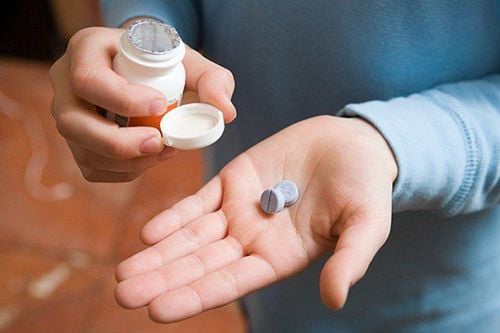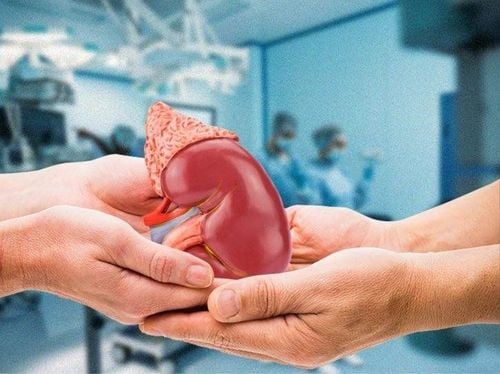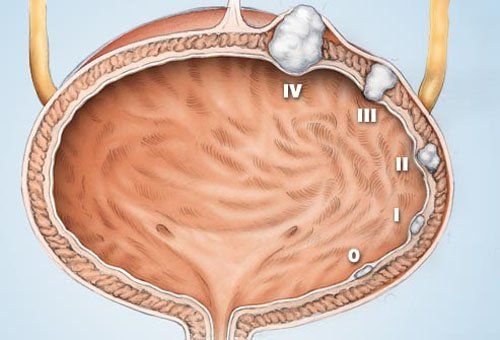This is an automatically translated article.
The article is professionally consulted by Master, Doctor Vo Thien Ngon - Department of General Surgery - Vinmec Da Nang International General Hospital
Cystoscopy is a method of diagnosis and treatment of urinary tract diseases that is widely applied today. This is a technique that helps doctors examine and evaluate the causes and conditions of diseases in the bladder and urethra, thereby making timely and effective treatment plans.
1. What is a cystoscopy?
Cystoscopy is a procedure that allows the doctor to examine the lower urinary tract, including the urethra and bladder, through an endoscope. This method uses an endoscope inserted into the bladder through the urethra. The doctor can look directly into the endoscope or through a computer screen that displays the endoscope. The endoscope has extra manipulative channels that allow other small devices to be inserted, for example, to remove a small sample of tissue from the bladder lining for biopsy. Bladder stones or small tissue growths are removed during laparoscopic surgery, eliminating the need for more complicated surgery.The time to perform the procedure depends on the complexity of the pathology. For mild diseases, treatment is simple, the procedure takes only about 10-15 minutes. The advantage of cystoscopy is that it does not use anesthesia but uses a topical anesthetic gel. Therefore, the patient can be discharged from the hospital immediately after completing the endoscopic procedure.
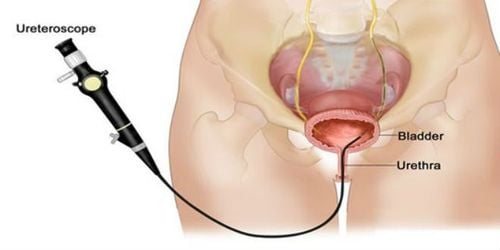
2. Indications for performing cystoscopy
Diagnosing diseases in the bladder and nearby organs Cystoscopy helps find the cause of diseases such as:Lower urinary tract syndrome: Frequent urinary tract infections, urinary disorders (dysuria). , urge to urinate, urinary incontinence, painful urination), overactive bladder, neurogenic bladder disorder, interstitial cystitis, chronic pelvic pain, bladder neck stenosis, urethral stricture; Hematuria: In cases of gross hematuria (visible to the naked eye), recurrent hematuria, microscopic hematuria (blood cells detected on urinalysis and urine sediments) ; Malignant tumors: Screening, checking bladder tumors, upper urinary tract ureter, urethra, urine cytology. In cases of pelvic tumors, diagnostic cystoscopy helps to investigate invasion and compression of the tumor with the bladder and ureters. During a colonoscopy, your doctor may also insert an instrument through the endoscope into your bladder to take a tissue sample for a biopsy. At the same time, this technique also helps to follow up after treatment of superficial bladder tumors (early stage); Support for retrograde pyelonephritis: With the endoscopic technique, the doctor can inject contrast material into each side of the ureter leading to the renal pelvis. The X-ray film obtained will help the doctor evaluate problems with the renal pelvis or ureters; Ureteroscope collection for testing: Urine samples are taken from both sides of the ureters through cystoscopy - ureteroscopy to help the doctor determine the infection or tumor related to each kidney; Other indications: Bladder trauma, abnormal cells in the urine sample, hematuria, azoospermia due to obstruction, suspicion of genitourinary tuberculosis, vesicoureteral reflux, cysticuria ureteral, vesicovaginal, vesico-intestinal, anatomical and structural abnormalities of the lower urinary tract (bladder diverticulum, urethral diverticulum, posterior urethral valve, urethral stricture, double urethral stricture) , bladder stones, urethral stones, foreign bodies in the bladder lumen,...). When cystoscopy shows no abnormalities, it helps rule out some medical causes. In addition, cystoscopy is also used to monitor disease progression or evaluate treatment outcomes.
Endoscopy to treat pathologies in the bladder Remove stones and foreign bodies in the bladder: With the endoscopic technique, the doctor will proceed to remove stones and foreign bodies in the bladder, especially when stones are stuck in the urinary tract. management (higher position and harder to get); Removal of polyps or tumors in the bladder: Laparoscopy helps to remove and remove small polyps or tumors from the lining of the bladder; Urinary catheterization: The doctor places a small catheter into the narrowed ureter by endoscopic method, supporting urine circulation for the patient; Treatment of inflammation, prostatic hyperplasia: Endoscopic cystoscopy technique helps doctors perform prostatectomy through a special laparoscopic surgical instrument. Thereby, small pieces of prostate tissue will be gradually removed and taken out.
3. Contraindications for cystoscopy
The following cases are not indicated cystoscopy:Acute urethritis; Acute prostatitis; Orchitis - acute epididymitis; Fever due to urinary tract infection; Blood clotting disorder.
4. Cystoscopy procedure
4.1 Preparation The patient should not eat or drink the night before the endoscopy day; The doctor may prescribe antibiotics to the patient before the procedure; Collect a urine sample before cystoscopy; With procedures performed with local anesthetic, the patient does not need to fast; Notify physician if patient is taking blood thinners, including warfarin, aspirin, and ibuprofen.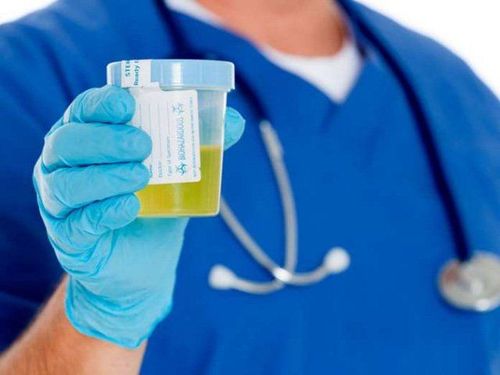
4.3 After the procedure Most cystoscopy patients can go home the same day. Recovery time depends on the type of local anesthetic and usually lasts no more than 4 hours. Patients after cystoscopy should pay attention to the following issues:
Rest and drink plenty of fluids to urinate more; During the day do not drink alcohol, drive or operate complex machinery; If the patient has a biopsy, heavy exercise should be avoided for 2 weeks after cystoscopy; Ask your doctor about when you can resume sexual activity. 4.4 Possible side effects Usually, after cystoscopy, patients do not experience any problems. However, within the first 24 hours, the patient may have a slight burning sensation when urinating, urinating more often, and the urine may be pink due to light bleeding (especially when a tissue biopsy is performed). Some cases may develop a urinary tract infection shortly after cystoscopy with fever and pain when urinating. Rarely, patients may experience bladder perforation as a result of the medical staff's manipulation of the laparoscopic instrument.
If after cystoscopy, the patient has symptoms of pain, severe bleeding; pain or bleeding for more than 2 days; signs of infection such as fever, pain in the hips and back, etc., should be examined immediately.
Cystoscopy is a technique used in the diagnosis and treatment of a number of pathologies in the urinary tract. When performing this procedure, the patient needs to strictly follow the doctor's instructions to ensure effective diagnosis, high accuracy and reduce the risk of complications.
Doctor Vo Thien Ngon has over 7 years of experience working as a urologist and surgeon at Hospitals: Hue Central Hospital, Hue University of Medicine and Pharmacy Hospital, Tam Tri Da Nang General Hospital .
Doctor Ngon with the ability to specialize in the field of examination and treatment of diseases of the Urology and Andrology system, Urology surgery, endoscopic urological surgery, Laparo urinary tract surgery, endoscopy Urinary. Currently, Dr. Vo Thien Ngon is a Urology - Orthopedic Surgery Doctor, Department of General Surgery, Vinmec Da Nang International Hospital
Please dial HOTLINE for more information or register for an appointment HERE. Download MyVinmec app to make appointments faster and to manage your bookings easily.





